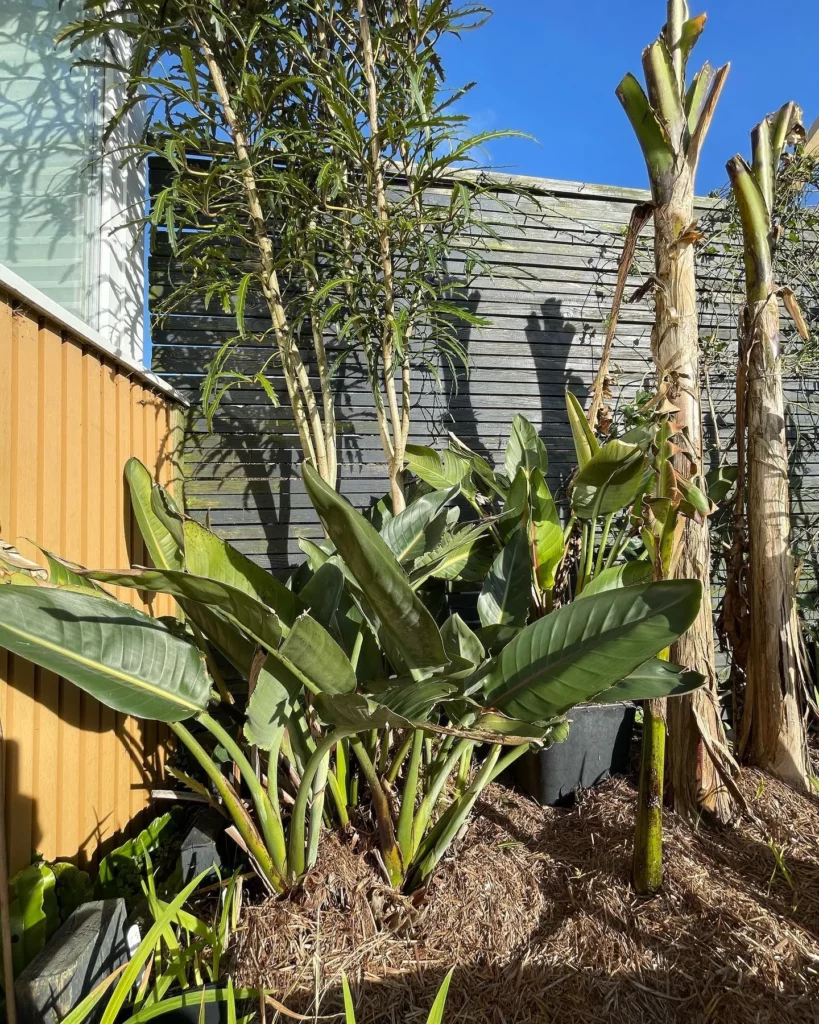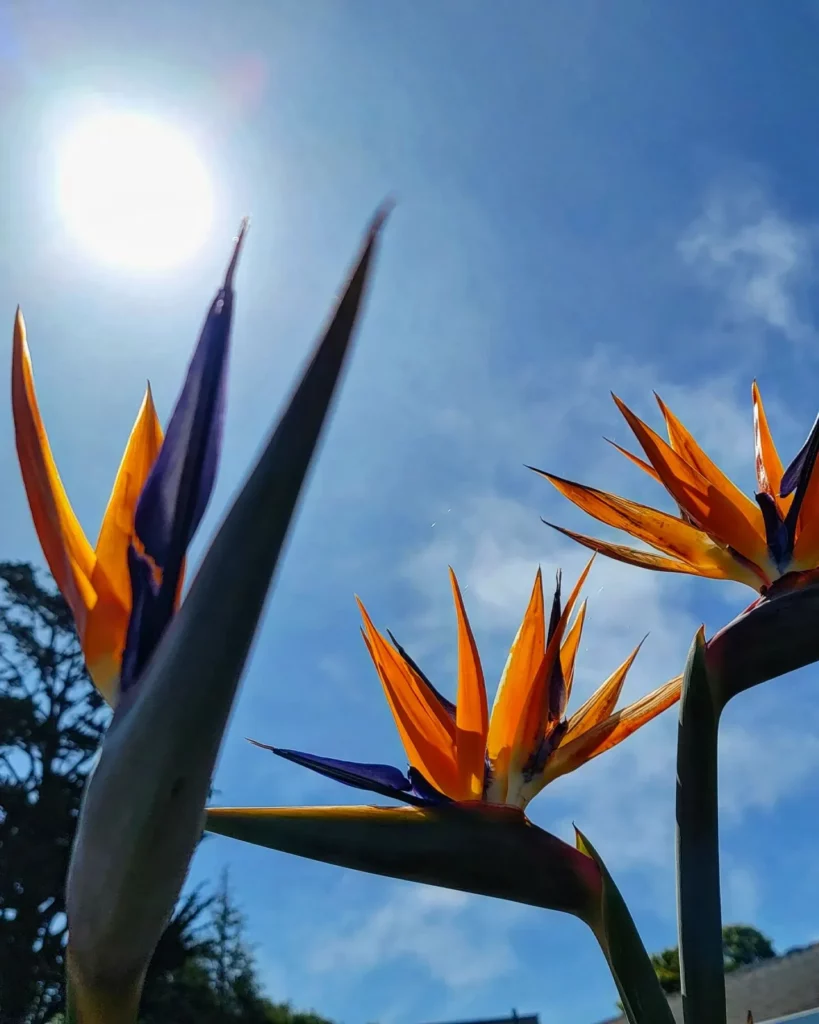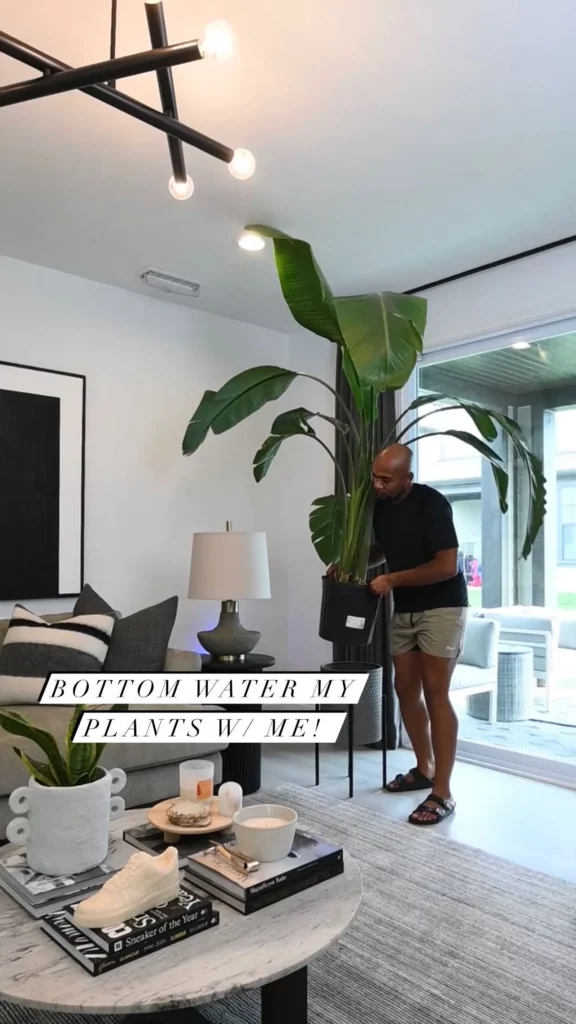The Birds of Paradise plants are truly a sight to behold, with their stunning appearance and vibrant hues. One of the most notable features of these plants are their large, colorful flowers, which closely resemble the plumage of actual tropical birds, hence their name. Their foliage is equally unique, with long, paddle-shaped leaves that add to their exotic charm.
No products found.
Light Requirements for Birds of Paradise

Birds of Paradise plants are sun-loving and require bright, indirect light to grow successfully. It is best to place them in a location where they can receive at least six hours of sunlight daily. However, long periods of direct sunlight can cause damage to the leaves of Birds of Paradise, so it is essential to provide them with partial shade during the hottest parts of the day to prevent this.
No products found.
Watering Birds of Paradise

No products found.
Proper watering is crucial for the health of your beloved Birds of Paradise. These stunning plants prefer soil that is consistently moist, but be careful not to overwater them as it can lead to root rot. To maintain optimal health, allow the top inch of soil to dry out between waterings and avoid letting your plant sit in standing water.
Fertilizing Birds of Paradise

Like any other plant, Birds of Paradise require nutrients to maintain healthy growth and produce beautiful blooms. Fertilizing these plants regularly can promote their growth and ensure that they remain vibrant.
No products found.
It’s recommended to apply a balanced, water-soluble fertilizer to Birds of Paradise every two to four weeks during the growing season. However, care should be taken not to over-fertilize, as this can damage the plant. Following the package instructions carefully can help prevent over-fertilization.
Proper fertilization, combined with adequate light, watering, and potting practices, can ensure that your Birds of Paradise plant thrives and remains a stunning addition to your space for years to come.
Potting Birds of Paradise

Repotting your Birds of Paradise is crucial every 2-3 years or when the plant has become too large for its current container. To ensure optimal growth, use well-draining soil in a pot that provides ample space for the roots to grow. When transplanting, avoid burying the rhizome (horizontal stem) too deep, as this can lead to rotting of the plant.
Propagation of Birds of Paradise

If you want to grow more Birds of Paradise, you can propagate them through division or seeds. Division involves gently separating the plant into smaller clumps, each having healthy roots. Take care not to cause damage. Birds of Paradise can also be grown from seeds obtained from mature flowers, but it requires some patience as it often takes some years to mature.
With these propagation methods, you can expand your collection of these exotic and stunning plants. And who wouldn’t want to share the beauty of Birds of Paradise with their friends and family?
Growth and Development of Birds of Paradise

Known for their unique and striking beauty, Birds of Paradise are relatively slow-growing plants that require patience and care to reach their full potential. Adequate light, proper watering, and regular fertilization are key to ensuring optimal growth and development.
- Light: Birds of Paradise thrive in bright, indirect light and should receive at least 6 hours of sunlight a day. However, direct sunlight for prolonged periods can damage the leaves, so partial shade may be necessary.
- Watering: To prevent root rot, it’s important to allow the top inch of soil to dry out between waterings. Evenly moist soil is ideal, but avoid letting the plant sit in standing water.
- Fertilizing: Regular fertilization with a balanced, water-soluble fertilizer can promote healthy growth and vibrant blooms. However, over-fertilization can be harmful, so follow package instructions carefully.
Pests and Diseases of Birds of Paradise

Birds of Paradise are hardy plants that usually do not suffer from pests or diseases. However, you may sometimes notice infestations of mealybugs, spider mites, or aphids on these plants. Inspect them regularly for signs of insects, and you can take precautionary measures to avoid infestations.
If you notice any sign of these pests, carefully cut off the infected parts of the plant and remove any insects before they spread. You can also apply insecticides that are specifically formulated for Birds of Paradise. Alternatively, you can use natural remedies such as neem oil or insecticidal soap to discourage insects.
Rotting is another issue that can affect the health of Birds of Paradise. This occurs due to poor drainage or over-watering. To prevent it, ensure that the soil you use is rich in nutrients and well-draining. Avoid letting the plant sit in standing water for more than a day.
Conclusion

Now that you have a comprehensive understanding of caring for Birds of Paradise, you can confidently cultivate these stunning plants in your home or garden. By providing the right conditions and following the guidelines outlined in this article, you’ll be able to enjoy the beauty of Birds of Paradise for years to come. Remember to keep an eye out for common pests and diseases, and always promote healthy growth through proper watering, fertilization, and potting. With patience and care, these plants will reward you with their vibrant flowers and unique appearance, adding a touch of the tropics to any space.
FAQ
What are Birds of Paradise?
Birds of Paradise are a diverse and vibrant species of plants known for their striking appearance, resembling the plumage of tropical birds.
How much light do Birds of Paradise need?
Birds of Paradise thrive in bright, indirect light and should receive at least six hours of sunlight a day. However, they should be provided with partial shade during the hottest parts of the day to prevent leaf scorching.
How should I water Birds of Paradise?
It’s important to keep the soil of Birds of Paradise evenly moist but not waterlogged. Allow the top inch of soil to dry out before watering and avoid letting the plant sit in standing water to prevent root rot.
How often should I fertilize Birds of Paradise?
Birds of Paradise benefit from regular fertilization during the growing season. Apply a balanced, water-soluble fertilizer every two to four weeks, following the package instructions to avoid over-fertilization.
How should I pot Birds of Paradise?
When potting Birds of Paradise, use well-draining soil and a spacious container that allows room for root growth. Avoid burying the rhizome too deep to prevent rotting.
How can I propagate Birds of Paradise?
Birds of Paradise can be propagated through division or by collecting seeds. Divide the plant into smaller clumps, ensuring each division has healthy roots. Seeds can be collected and germinated at home, but it may take several years for the plant to reach maturity.
How long does it take for Birds of Paradise to grow and bloom?
Birds of Paradise are slow-growing plants and may take several years to reach their full height and produce blooms. Optimal growth requires adequate light, proper watering, and regular fertilization.
What pests and diseases can affect Birds of Paradise?
While Birds of Paradise are generally resistant to pests and diseases, common issues include mealybugs, spider mites, and aphids. Regular inspection and prompt treatment with appropriate insecticides or natural remedies can help prevent infestations.





